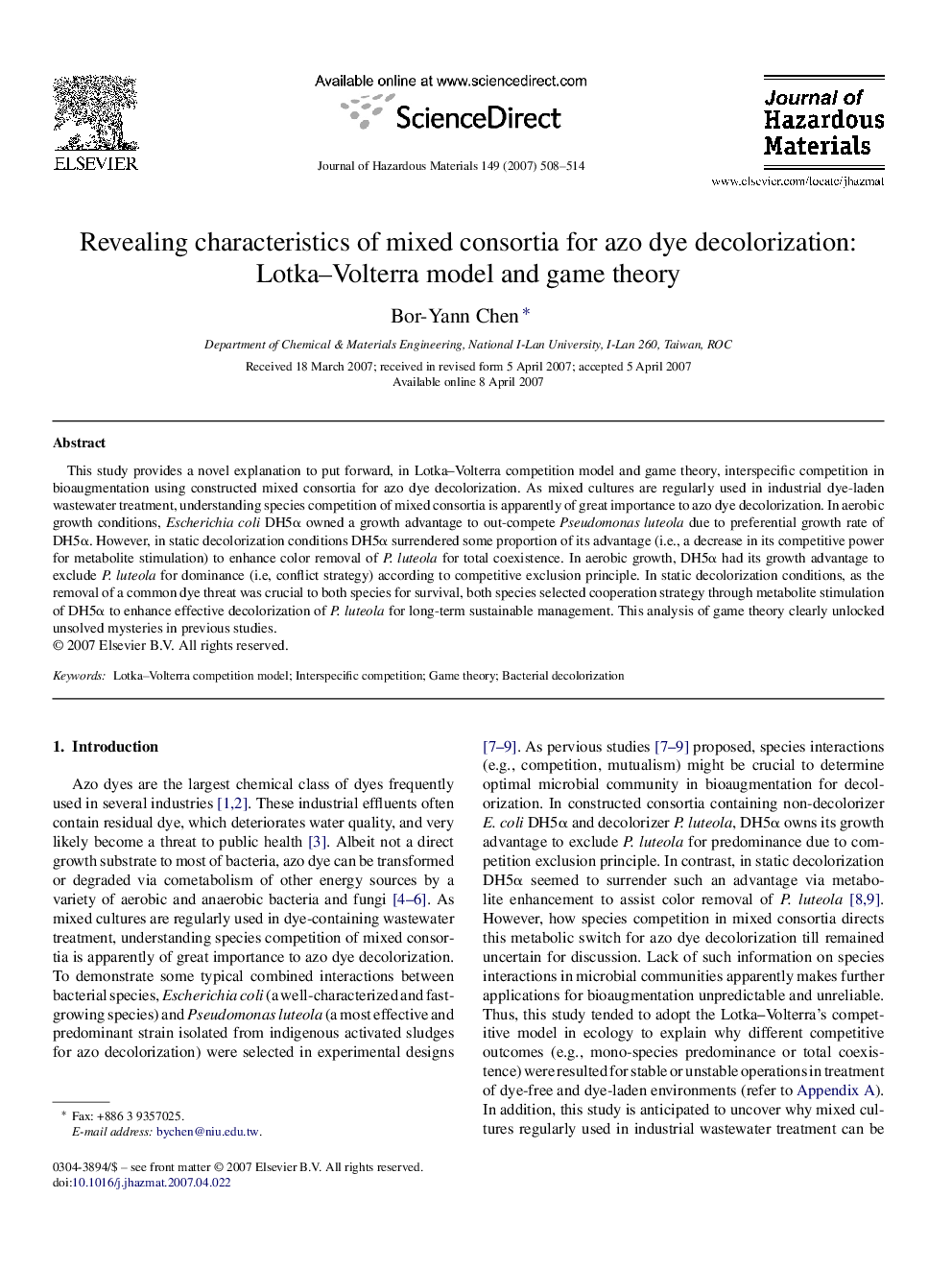| Article ID | Journal | Published Year | Pages | File Type |
|---|---|---|---|---|
| 584211 | Journal of Hazardous Materials | 2007 | 7 Pages |
Abstract
This study provides a novel explanation to put forward, in Lotka-Volterra competition model and game theory, interspecific competition in bioaugmentation using constructed mixed consortia for azo dye decolorization. As mixed cultures are regularly used in industrial dye-laden wastewater treatment, understanding species competition of mixed consortia is apparently of great importance to azo dye decolorization. In aerobic growth conditions, Escherichia coli DH5α owned a growth advantage to out-compete Pseudomonas luteola due to preferential growth rate of DH5α. However, in static decolorization conditions DH5α surrendered some proportion of its advantage (i.e., a decrease in its competitive power for metabolite stimulation) to enhance color removal of P. luteola for total coexistence. In aerobic growth, DH5α had its growth advantage to exclude P. luteola for dominance (i.e, conflict strategy) according to competitive exclusion principle. In static decolorization conditions, as the removal of a common dye threat was crucial to both species for survival, both species selected cooperation strategy through metabolite stimulation of DH5α to enhance effective decolorization of P. luteola for long-term sustainable management. This analysis of game theory clearly unlocked unsolved mysteries in previous studies.
Related Topics
Physical Sciences and Engineering
Chemical Engineering
Chemical Health and Safety
Authors
Bor-Yann Chen,
